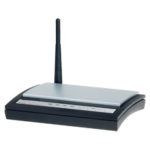Teaching methods have changed dramatically over the last few years, leading to numerous electronic resources entering the classroom. This makes school IT a formidable challenge—security experts have to juggle budget constraints with heavy traffic on the network due to a huge number of connected devices.
There is no stopping the use of technology to enhance student engagement and learning. Therefore, cybersecurity concerns are increasing along with K–12 schools’ dependence on technology.
While no network is impervious to assaults, a reliable and effective network security solution is crucial for safeguarding student data and decreasing districts’ vulnerability to data theft and sabotage.…Read More



